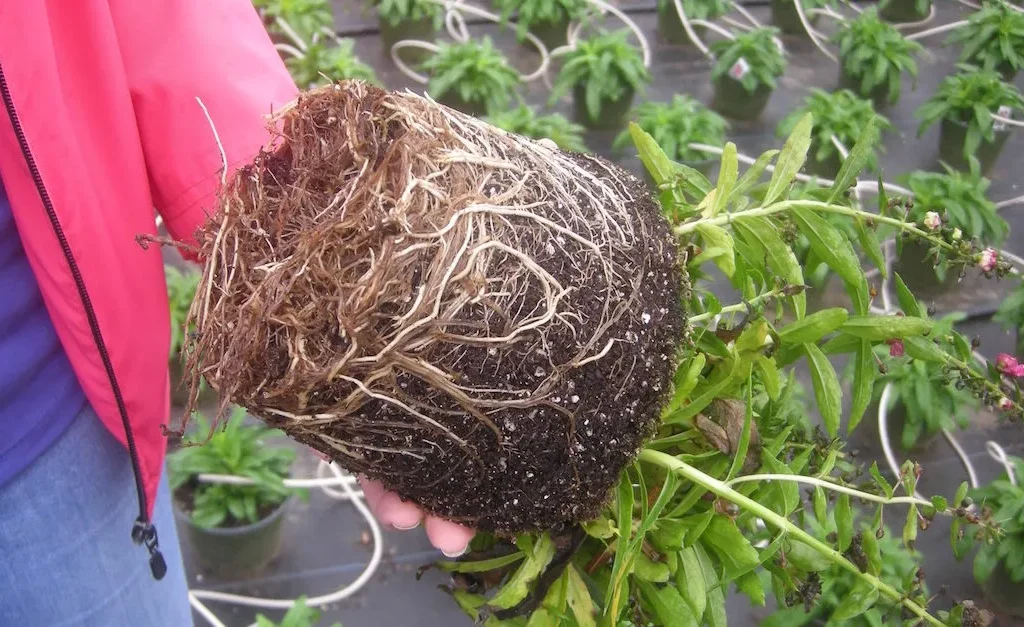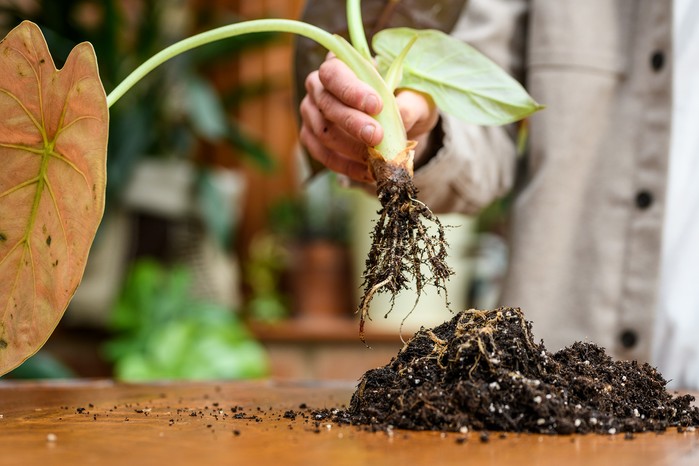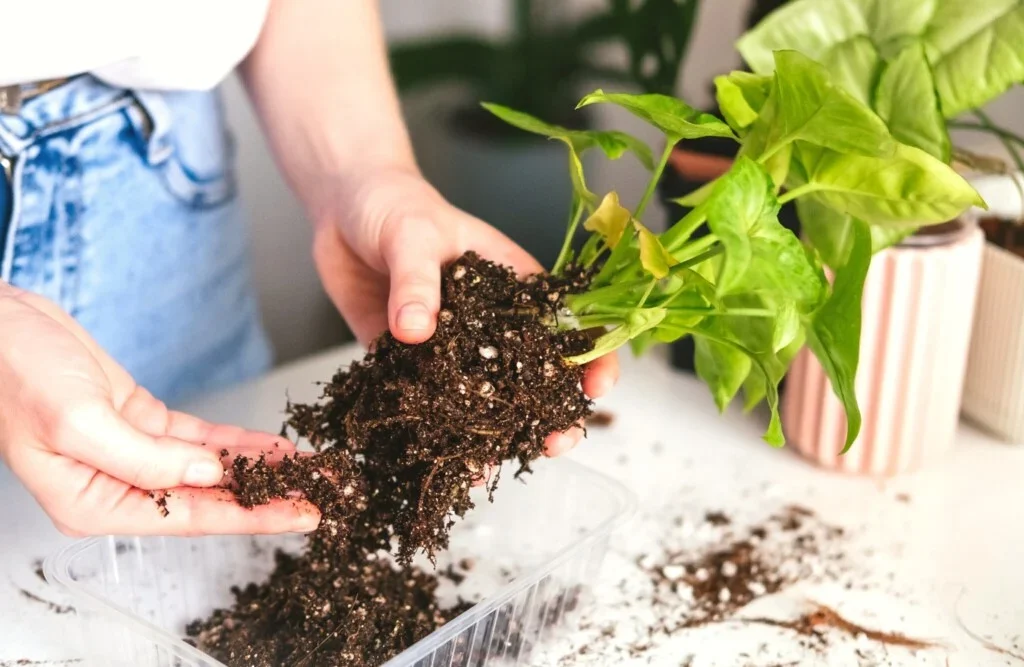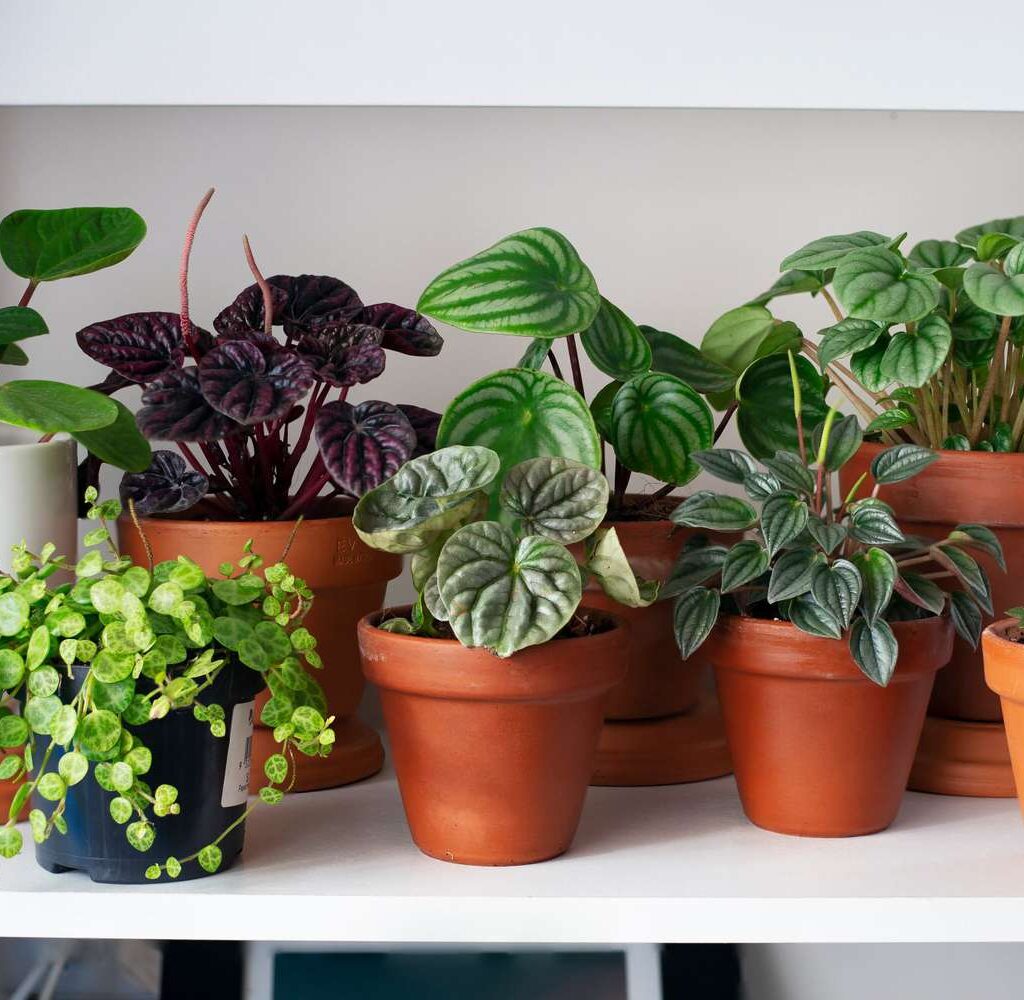Few things are more heartbreaking for a plant lover than seeing a beloved potted plant wilt, yellow, or die seemingly overnight. Often, the culprit behind this sudden decline is root rot — a common but preventable problem that affects potted plants of all types.
Root rot occurs when a plant’s roots sit too long in soggy, oxygen-deprived soil, causing fungal or bacterial infections that slowly kill the roots and ultimately the plant. Fortunately, with some careful attention and smart gardening habits, you can keep your plants healthy and thriving for years.
This article breaks down practical tips to prevent root rot in potted plants, giving you the knowledge and tools to protect your green friends.

1. Understand What Root Rot Is and Why It Happens
Root rot is a disease caused by fungal or bacterial pathogens such as Phytophthora, Pythium, or Rhizoctonia, which thrive in overly wet, poorly drained soils. When roots stay saturated for extended periods, they become deprived of oxygen, weaken, and become vulnerable to infection.
Symptoms include:
- Yellowing or wilting leaves
- Mushy or blackened roots
- A foul smell coming from the soil
- Stunted growth or sudden plant collapse
Understanding this helps us focus on prevention through proper watering, soil, and container choices.

2. Choose the Right Pot with Proper Drainage
The first line of defense against root rot is your plant’s home — the pot! Choosing a pot with adequate drainage holes ensures excess water escapes rather than pooling at the bottom.
- Avoid pots without drainage holes unless you add a drainage layer and monitor water carefully.
- Terracotta and porous ceramic pots are excellent because they allow moisture to evaporate through their walls, reducing soil moisture.
- If using plastic or glazed pots, be extra cautious with watering since they retain moisture longer.

3. Use Well-Draining Potting Mix
Potting soil is not just dirt — it’s a carefully blended medium designed to provide nutrients, aeration, and water retention in balanced amounts.
To prevent root rot, use a well-draining potting mix suited to your plant species:
- For most houseplants, a mix containing peat moss or coco coir, perlite, and vermiculite works well.
- Succulents and cacti require gritty, sandy mixes that dry out quickly.
- Add extra perlite, pumice, or coarse sand if your mix tends to hold too much water.
Avoid using garden soil or heavy clay-based mixes that compact and trap water.

4. Water Your Plants Properly
Improper watering is the biggest cause of root rot. Both overwatering and watering too frequently can keep the roots wet and suffocate them. Here’s how to water wisely:
- Check the soil moisture before watering by sticking your finger about an inch deep. Only water if the soil feels dry at this depth.
- Water thoroughly but less often, allowing excess water to drain out the bottom. Avoid “light watering” that wets only the top soil and leaves roots soggy below.
- Reduce watering frequency in winter when many plants go dormant and need less moisture.
- Use pots with saucers to catch excess water but empty saucers regularly to prevent waterlogging.

5. Ensure Good Air Circulation Around Your Plants
Good airflow around your potted plants helps soil dry out more evenly and reduces humidity that promotes fungal growth. Avoid overcrowding plants or placing pots directly against walls or windows where air is stagnant.
If you keep plants indoors, consider using a fan on low setting or opening windows periodically to boost ventilation.

6. Avoid Standing Water and Excess Moisture
Standing water in plant trays, saucers, or under pots creates a perfect breeding ground for root rot pathogens. Always:
- Empty saucers after watering and don’t let plants sit in water.
- Use pot feet, plant stands, or drainage trays that elevate pots slightly to allow air circulation underneath.
- Monitor outdoor potted plants during rainy seasons and move them to sheltered spots if needed.
7. Repot Periodically to Refresh Soil
Old potting soil loses its structure and drainage ability over time, becoming compacted and prone to holding moisture. It can also accumulate pathogens harmful to roots.
Repot your plants every 1–2 years, or when you notice:
- Slowed growth or yellowing despite proper care
- Roots circling or breaking out of drainage holes
- Soil staying wet too long after watering
Use fresh, well-draining potting mix and clean pots thoroughly to avoid reintroducing root rot organisms.
8. Sterilize Tools and Pots Before Use
Fungal spores can linger on pots, gardening tools, or even gloves. To prevent contamination:
- Clean pots with warm soapy water and rinse well.
- For extra precaution, sterilize pots and tools by soaking them in a 10% bleach solution (1 part bleach to 9 parts water) for 10 minutes, then rinse thoroughly.
- Avoid reusing soil from a plant that died from root rot unless properly sterilized.
9. Use Fungicide Treatments if Necessary
If you notice early signs of root rot, you may be able to save your plant with careful treatment:
- Remove the plant from its pot and gently rinse roots. Cut away all mushy, blackened, or rotten roots with sterilized scissors.
- Repot in fresh, well-draining soil and a clean pot.
- Apply a fungicide formulated for root rot, following the label’s instructions carefully. Organic options like neem oil or cinnamon powder may help prevent fungal growth.
- Reduce watering frequency and improve airflow.
10. Choose Plants That Are Less Susceptible to Root Rot
If you often struggle with root rot or have a naturally humid environment, consider selecting plants that tolerate or prefer moist conditions and resist root diseases. Examples include:
- Spider plants (Chlorophytum comosum)
- Peace lilies (Spathiphyllum)
- Snake plants (Sansevieria)
- ZZ plants (Zamioculcas zamiifolia)
For more sensitive species, strict watering and soil management become even more critical.
Bonus Tips for Healthy Roots
- Avoid potting too deep: Plant roots need oxygen near the soil surface. Planting too deeply can reduce airflow.
- Monitor humidity and temperature: High humidity and warm soil favor fungal growth. Use a humidity monitor and adjust watering accordingly.
- Add mulch sparingly: Mulch can help retain moisture but too much can keep soil wet — use thin layers on top only.
Final Thoughts
Root rot can devastate your favorite potted plants, but with thoughtful care, it’s entirely preventable. The key is balancing water, soil, and airflow — creating conditions where roots stay moist yet well-aerated, discouraging fungal invaders.
By choosing pots and soils carefully, watering mindfully, and practicing good hygiene, you’ll give your plants the best chance to thrive. Keep an eye out for early warning signs and act quickly if problems arise, and your potted garden will flourish for years to come.





